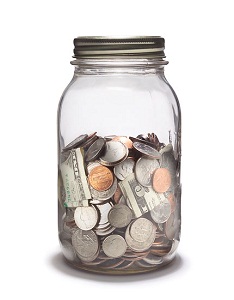Saving money is one of the most important parts of a financial plan. If you don’t save money, you can never get ahead in life. It’s as simple as that. I mean, think about it – no one ever got rich by borrowing money. That’s why I love the Festival of Frugality – it’s a gathering of articles devoted to helping people save money. This week we had over 40 entries. What you see here are the best of the best, the articles which will help you save money and improve your financial situation. Thanks for sharing, and thanks for reading!
Masters of Frugality (Tips to Save Money)
 Kyle James presents Top 10 Recession Busters posted at Kyle, saying, “Here are my Top 10 ways to save money in a tough economy.”
Kyle James presents Top 10 Recession Busters posted at Kyle, saying, “Here are my Top 10 ways to save money in a tough economy.”
Melissa Batai presents How to Save on Diapers or Get Them For Free posted at Mom’s Plans, saying, “While it is very difficult to get free diapers, there are many ways to lessen how much you pay for diapers.”
No Debt MBA presents CEOs as MBA students – They were on budgets too! posted at No Debt MBA.
Flexo presents Use Technology to Save Gas Money posted at Consumerism Commentary.
BIFS presents Restaurant Menu Tricks to Get More of Your Money posted at Budgeting In the Fun Stuff, saying, “Eating out is one of the first things to go when you try to go frugal, but it’s also something many enjoy and if that’s what makes you happy you should find a way to enjoy it without breaking the bank. Here are some tips.”
Dr. Dean presents Saving Money: While on Vacation! posted at Dr. Dean’s TheMillionaireNurse.com Blog, saying, “Keeping costs down while on vacation is a great way to make things more enjoyable and make the money you do spend last and last.”
FMF presents How to Decide Whether to Drive or Fly posted at Free Money Finance.
The DIY Troupe (The Self-Made Crew)
Control your Cash presents Why pay someone when I can do it myself? posted at Control Your Cash: Making Money Make Sense, saying, “Sometimes, the smartest way to be frugal is to start writing checks. Here’s why.”
MoneyThinking presents Summer Savings… Through Gardening? posted at Money Thinking.
Tarik presents Anything worthwhile needs 8 hours of continuous work posted at Success starts today, saying, “There are many types of work that may take from a few minutes to a few hours, but valuable work needs time. Time needs to be booked without interruption for long periods. To be able to make progress on all my activities including work, businesses, blog and family, I use several techniques to block and reserve my time and work on my most valuable goals. Here are three tips on how you can create blocks of time that will make every day of your life worthwhile.”
Coupon Magnates (Coupon Clippers)
Jacob A. Irwin presents Are Coupons Right For You? posted at My Money Blog – Personal Finance and Investing, saying, “Coupons are often touted as an effective way to be frugal and save money. However, there are several factors to consider in determining they’re worth your time. I’ve tried to outline several of these in this post.”
The Wise Squirrel presents ROI on Coupons posted at Squirrelers, saying, “Sometimes when using coupons to save money, it’s important to measure how valuable they are by considering the time and effort invested as well.”
Suba presents Reselling groupon or any daily deals vouchers posted at Wealth informatics.
Sustainable PF presents A Green Cycle: Alternative Feminine Hygiene Products posted at Sustainable Personal Finance, saying, “Green feminine hygiene products are not only earth friendly they are part of a frugal lifestyle as well. Read on to learn about this interesting way to save money.”
The Castle Guards (Insurance)
Jeff Rose, CFP presents Why Bundling Your Insurance Policies is a Good Idea posted at Consumer Boomer, saying, “Have you wondered whether bundling your insurance policies can benefit you? Here are a few good reasons to make the switch.”
Odysseas presents 15 Items that Impact the Cost of Homeowners Insurance posted at Wallet Blog, saying, “Hey, I hope you’re having a great weekend! I think you and your readers will really enjoy my submission this week because I explain a number of ways you can try to decrease your homeowners insurance. There are a variety of things you can change, alter or improve in order to reduce your annual premium and save money in the long run.”
Super-Size This! (Investing)
Ken presents 5 Ways to Reduce the Risk Involved with Retirement Savings posted at Spruce Up Your Finances.
My Journey presents How to Retire Wealthy posted at My Journey to Millions, saying, “Since our lives are ever-changing and dynamic, why do we invest as if they were static and unchanging? Rather than investing our money in one big pot, I say we should develop some constant cash flow from other sources (while contributing that 10% into our “just-in-case” fund)!”
The Gilded Couple (Banking)
Tim Chen presents When Should You Get a Prepaid Debit Card? posted at NerdWallet Blog – Credit Card Watch, saying, “In truth, there’s almost no reason to get a prepaid debit card. Even if you have a bad or limited credit history, you have much better options.”
Thanks for participating, everyone! You can enter next week’s Festival of Frugality using the carnival submission form or you can submit your entries here.
 Kyle James presents
Kyle James presents